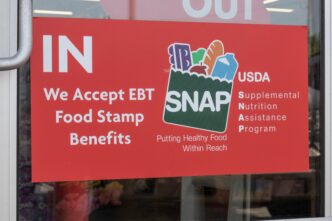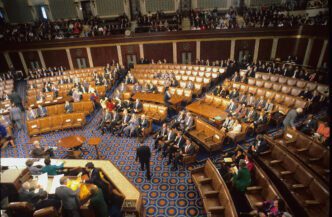Executive Summary
The Story So Far
Why This Matters
Who Thinks What?
The ongoing government shutdown has extended into its fifth week, creating significant uncertainty for millions of Supplemental Nutrition Assistance Program (SNAP) recipients and federal workers across the United States. As congressional Republicans and Democrats remain deadlocked over a resolution, food assistance payments have faced delays, and federal employees continue to work without pay, leading to increased demand on food banks and economic strain on local businesses.
Impact on Food Assistance and Recipients
Millions of Americans relying on SNAP benefits are experiencing delays in their payments, with some recipients, like Laterese Johnson, facing dwindling food supplies. Johnson noted that her benefits, intended for one person, must be shared with her grandchildren, underscoring the immediate sacrifice families are making.
While two judges ruled last week that the Trump administration must utilize emergency funds for the approximately 42 million SNAP recipients, the Department of Agriculture’s contingency fund is insufficient to cover the total cost of payments. Many recipients, who were due to receive allotments on November 1, are awaiting clarification on when and if they will receive their full benefits.
Rachel Kent, another SNAP recipient, emphasized the critical nature of food assistance, stating that “Congress can debate budgets all day, but you don’t debate whether children get to go to bed hungry.”
Strain on Food Banks and Charities
The prolonged lapse in government funding has significantly stressed food banks, charities, and nonprofits nationwide, which are struggling to meet a surge in demand from both SNAP recipients and unpaid federal workers. Nina Savransky, a former disaster response worker who volunteered at a Washington, D.C.-area food bank, described the situation as a “disaster response” happening internally within the United States.
Claire Babineaux-Fontenot, CEO of Feeding America, warned of “cataclysmic” consequences if the charitable food system is expected to fill the gap left by SNAP disruptions. She highlighted that for every one meal the charitable system provides, SNAP typically provides nine. Cara Durr, CEO of the Food Bank of Alaska, reported increased anxiety and demand, noting that many communities they serve were already recovering from Typhoon Halong.
Federal Workers Face Financial Hardship
Hundreds of thousands of federal workers are grappling with the effects of the extended shutdown, facing emotional and financial distress due to uncertain pay and employment status. Many are turning to food banks for assistance, an unprecedented situation for some.
Colby, a State Department employee of 21 years, expressed his surprise at finding himself in line for food after years of volunteering at the same food bank. Another federal worker, Janis, became emotional describing the choices her family now faces between feeding themselves and paying bills. She conveyed a feeling that the government “doesn’t care” as the holidays approach, questioning the notion of the U.S. as a “land of opportunity.”
Economic Ripple Effects on Grocers
The delays in food benefits are not only impacting recipients and support organizations but also causing financial difficulties for grocers. Daweit Gebru, co-owner of Elmira Market in Washington, D.C., estimates that 60% to 65% of his business comes from SNAP customers. He reported that the past weekend was “possibly the worst time of business” and that he and his brother are resorting to credit cards to cover staff salaries and stay afloat.
In Metairie, Louisiana, Joseph Zuppardo, owner of Zuppardo’s Family Market, anticipates a potential 15% drop in sales if SNAP disruptions continue long-term, despite efforts to keep food affordable. In Waterville, Maine, Joseph’s Market manager Sydney McKinnis is creating a special under-$150 November package of basics, willing to sell close to cost to help families fill their freezers.
Political Stalemate Continues
The underlying cause of the widespread disruption remains the political stalemate in Washington. Congressional Republicans and Democrats have yet to reach an agreement to end the shutdown. GOP House Speaker Mike Johnson has suggested that progress could be made after Election Day, claiming Democrats believe ending the impasse could harm voter turnout in key races.
President Donald Trump has also increased pressure on the GOP to unilaterally end the government shutdown by eliminating the Senate filibuster, a move Republican leaders have opposed.
Ongoing Uncertainty
The government shutdown continues to inflict significant hardship on vulnerable populations and federal workers, while also creating economic instability for businesses reliant on consumer spending. With no immediate resolution in sight, the uncertainty surrounding food assistance and federal pay persists, exacerbating an already challenging situation across the nation.








